Version español aquí.
Into the football soccer mindset
About 10 days before I start packing my bags for the 2022 World Cup in Qatar, memories of the first World Cup I watched on TV popped up in my mind: Argentina 78.

A couple of years ago, when I was working on a Lithium Construction Project in Chile, I had the opportunity to visit Argentina. Although I was aware of the importance of soccer for the Gaucho* country, I didn’t know that Buenos Aires is the city with the most soccer stadiums in the world.

It was a hard mission to try to visit all the stadiums on a 6-day trip, with so many places in Buenos Aires.
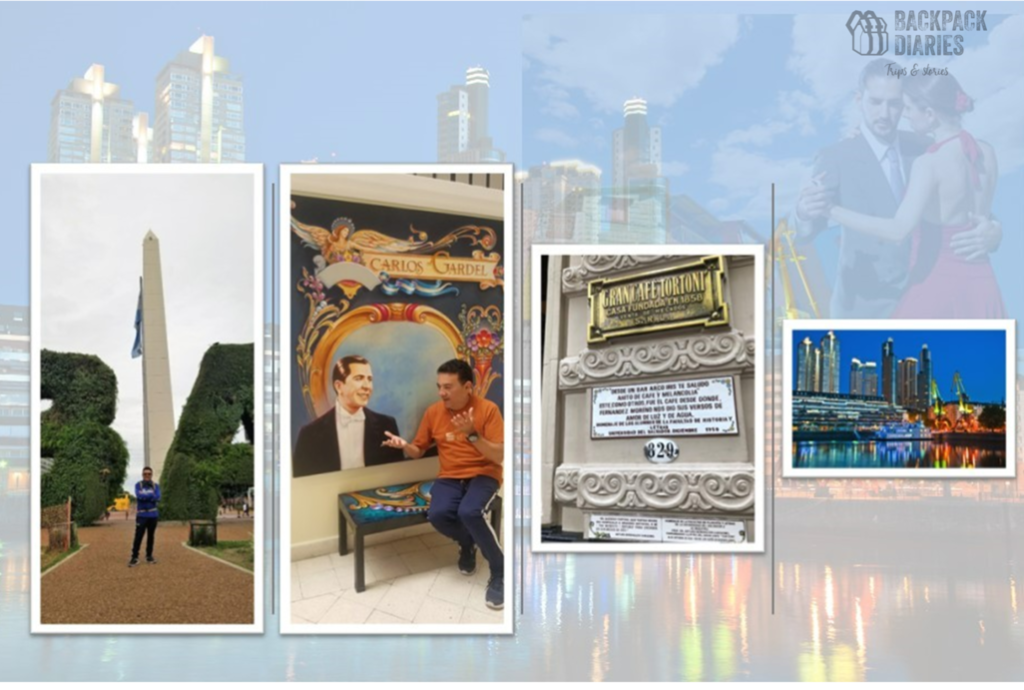
But at least I was able to visit the two most emblematic stadiums in Argentina: the Boca Juniors stadium, known as the “Bombonera,” and the River Plate stadium, known as “El Monumental,” without this meaning to disparage other teams such as Vélez Sarsfield, Independent, Racing, Hurricane, San Lorenzo, etc.
La Bombonera, the Boca Juniors stadium
Maradona: “Many caudillos have shit themselves here in the Bombonera.”
Pelé: “I never felt an earthquake like this happen.”
Romario: “La Bombonera is the closest thing to hell.“
Boca is the team of the fans “whose passion can only be explained with the heart,” “the half + one team,” well, that’s how they define themselves.

The stadium is located in the neighborhood of “La Boca”, a region settled by Italian immigrants from the province of Genoa. In their dialect, people from that province are known as “Xeneize” (pronounced Henés), another nickname for the Boca Juniors team.

Showrooms
The tourist bus dropped us right in front of the entrance to the “Museo de la Pasion Boquense“; there was a short queue to enter.

Right from the entrance, blue-yellow tone decoration and brushstroked murals-themed Diego Maradona welcome the visitors.

Screens upholstered with pin-type stars have printed the names of the founders, characters, and players who have made history on the team.

An audiovisual room projects the history and characters that made outstanding Boca Juniors.
Another showroom display trophies of the Libertadores Cup tournaments 2007, 2003, 2001, 2000, 1978, and 1977.
Pitch level
The guide led us through the stands, where he continued to tell us about the stadium’s history, inaugurated in 1940. Its official name is Alberto J. Armando, but it is better known by the nickname “Bombonera” due to its shape seen from above.
There is an elevator for people with disabilities and/or the elderly.
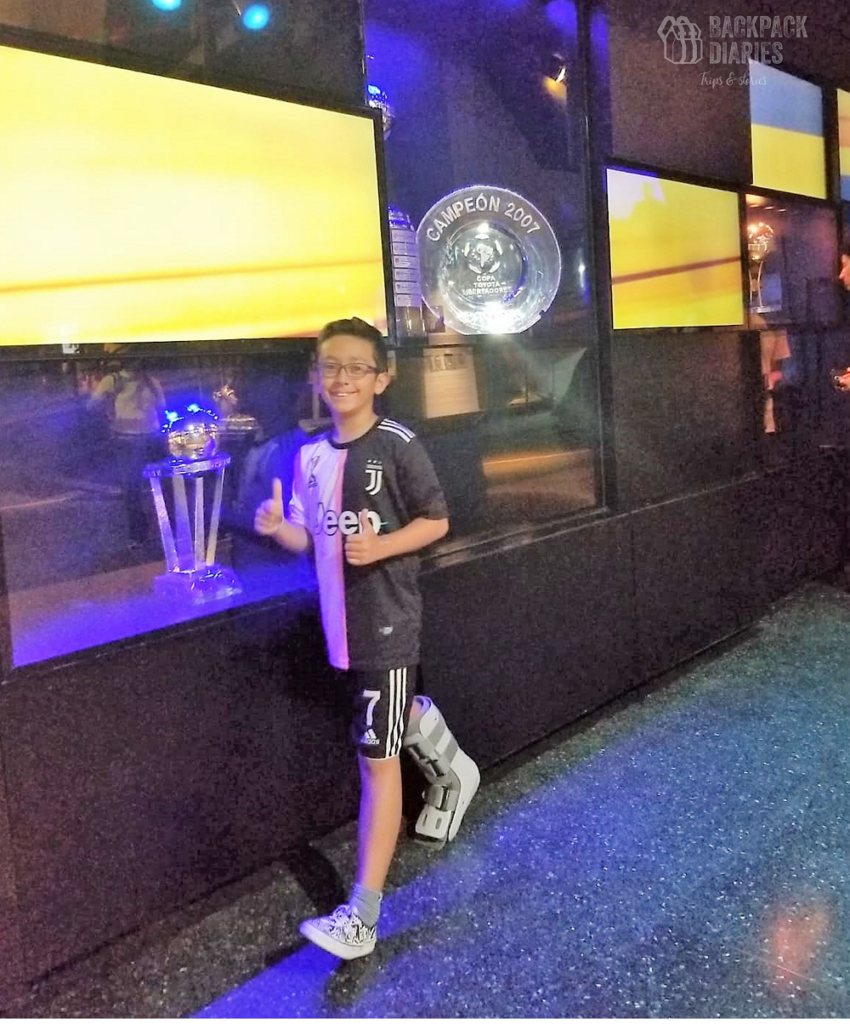
Then afterward, we climbed down to the pitch level for pictures; it caught my attention that there was not much separation between the stands and the field. So, I can imagine the pressure intensity the visitor team has to endure.

A particular sector of the stands has the number 12 identified in recognition of the importance of the fans.

Tunnels to the dressing rooms
The tour continued with the tunnels towards the dressing rooms, with murals displaying the Boca Junior’s achievements in history.
Handled by Maradona Championship 1981 (a different hand, not 1986 God’s hand)

1977 First Copa Libertadores
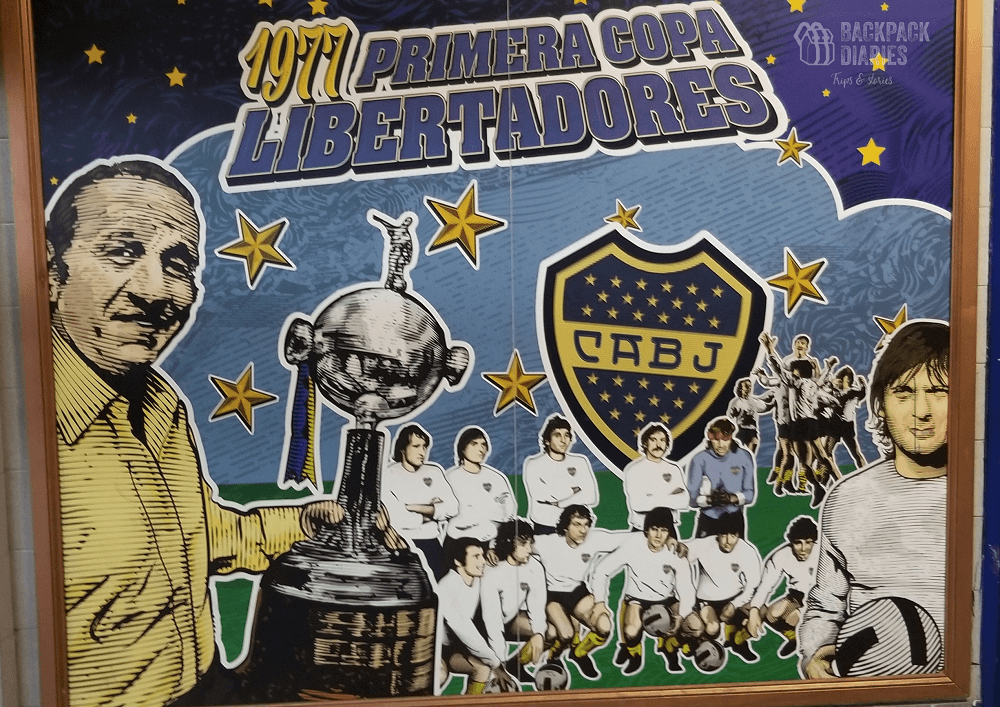
1962 Tarzan’s save

1948 Varela’s beret trick

1931 Olympic Lap

1925 First international tour

On the way out
Toward the exit, the statues of Boca Junior’s most popular players Diego Maradona, Juan Román Riquelme, and Martin Palermo.

Carlos Bianchi has a statue there, too; he is the coach with the most titles for Boca Juniors. Finally, there is another statue, a tribute to the fan.

The Monumental River Plate Stadium

That day of June 25, 1978, I am sure that the Argentine team won the World Cup thanks to player number 12: the public in the stadium.
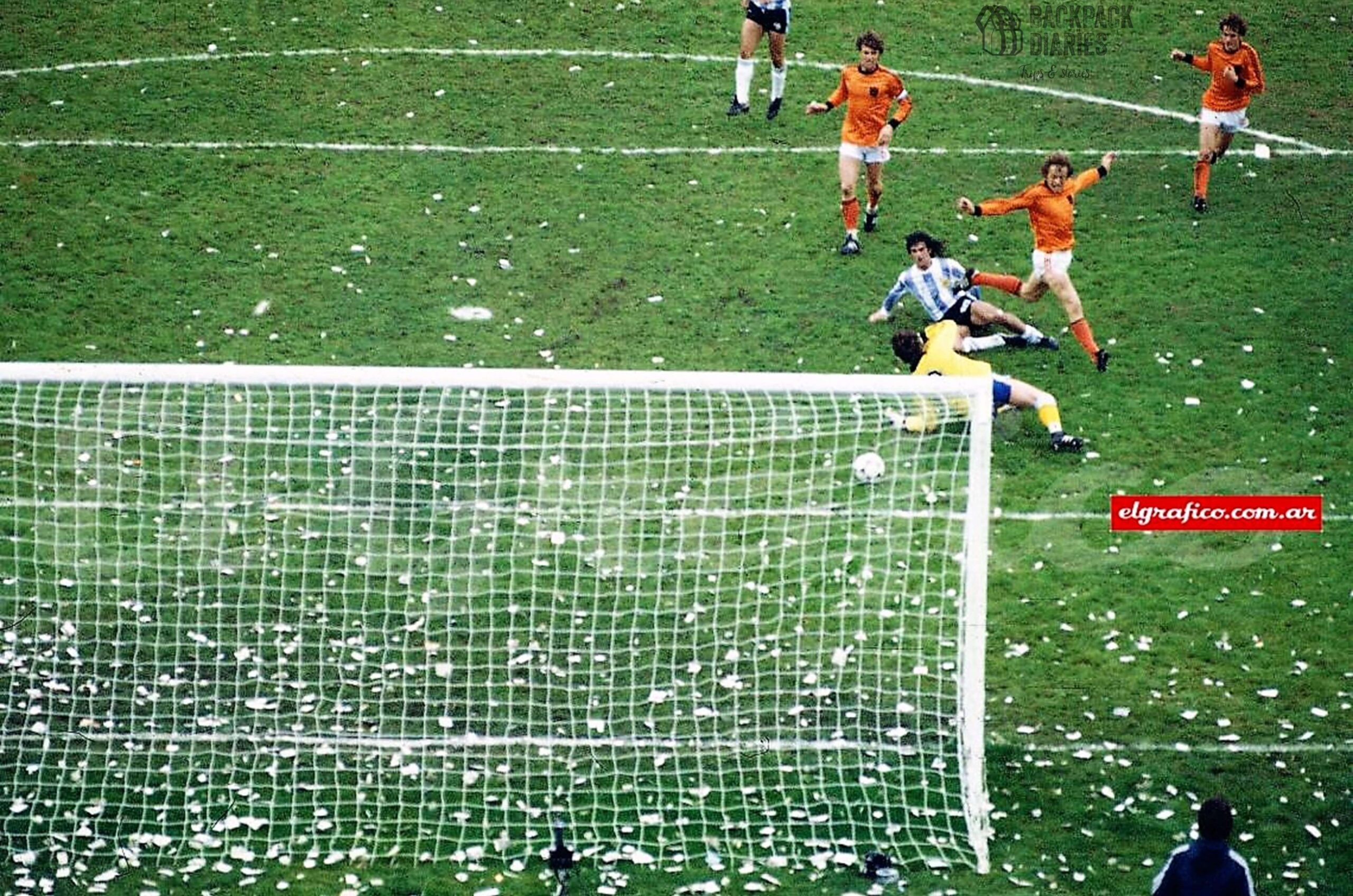
“Being from River is not explained or understood; it is lived and felt.”

I will never forget the electrifying atmosphere irradiating from the pitch, covered with confetti and ticker tape. That was the first World Cup I followed on television and where my passion for World Cups was born.
The Monumental River Plate is the largest stadium in Argentina, it is the home of the River Plate, but it is also the home of the Albiceleste team.
The River Plate has been the source of players like the “saeta” Di Stéfano (who later became the Real Madrid superstar), Ubaldo Fillol, Enzo Francescoli, Burrito Ortega, Neri Pumpido, Daniel Pasarella, Saint Goycoechea 🙏(the “Saint” is my invention, just check the amount of saves he did on 1990 World Cup), etc.

On our visit, we took a Cabify since the tourist bus doesn’t stop near the stadium. El Monumental hosted the first Pan American Games in 1951 and has an athletic track.
The tour guide explained that the “Club Atlético River Plate,” was founded in 1901. Then, however, the Monumental stadium was “partially” inaugurated on May 26, 1938, as stated in the act exhibited.

At pitch level
We climbed down to the pitch level for pictures; unfortunately, there were grass works that made the field look patchy here and there.

I imagined the last minute of that final match against the Netherlands when Rensenbrink’s goal shot hit the post. It went centimeters and seconds away from what could have been a Maracanazo” to Argentina, right there in the Monumental Stadium of Buenos Aires.

River Museum Exhibition Hall
The “River Museum” is spacious and elegant; the white and red colors are present indoors and on the outdoor stands.
A “time tunnel” exhibits historical press through the 12 decades of the club since its foundation. A racing car.
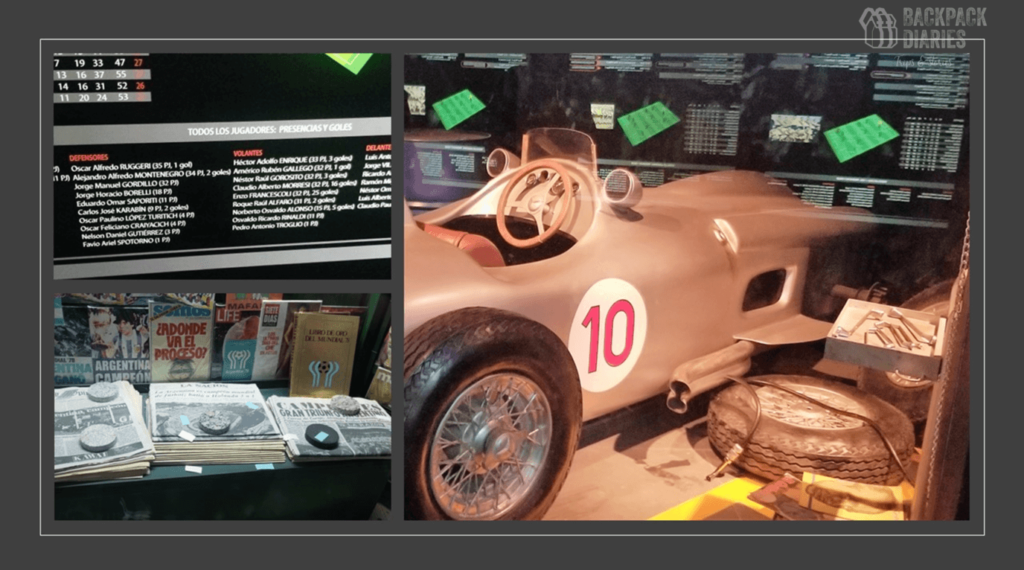
1986, 1996, 2015, and 2018 Copa Libertadores are on display, along with the many national championship trophies won by the club. As of 2020, it is the second team with the most titles (69), barely behind its archrival Boca Juniors (74).
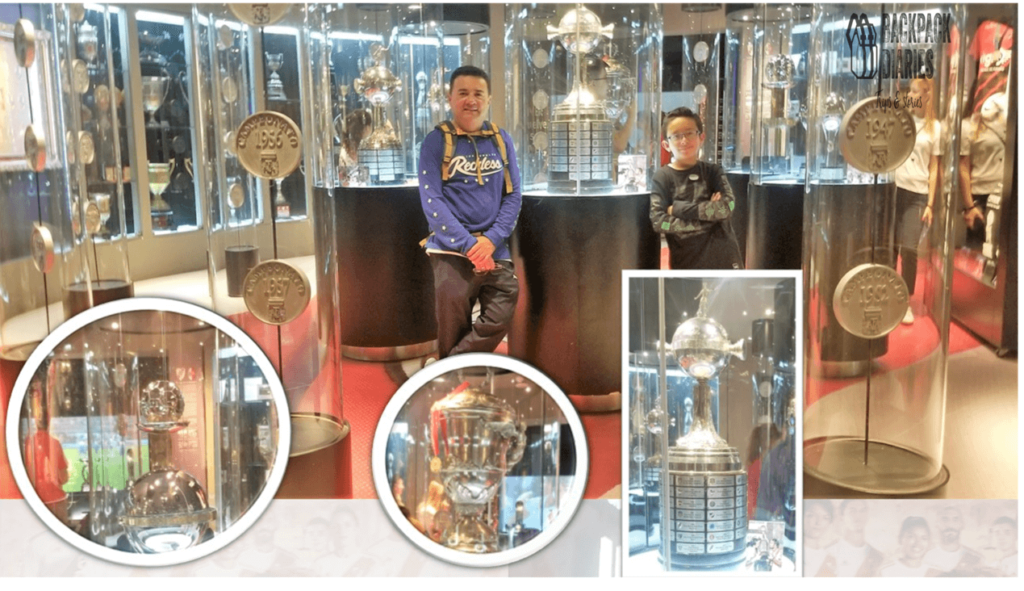
One of his outstanding achievements was the Intercontinental Cup in 1986 in a match against Steaua Bucharest 1-0.
In Argentina, River Plate is the second team with the most titles (69), barely behind its archrival Boca Juniors (74).
Although it wasn’t on display, a sewing machine references the longest flag in the world: the River Plate. Validated by Guinness Records, on October 8, 2012, thousands of fans “completed the flag that measures 7829.74 meters by 4.5 wide.

The Tango ball used in the 78 World Cup.

The tour continues with replicas of some of the most popular iconic goalscorer’s golden cleats.

A collection of the club shields shows the design evolution with time.
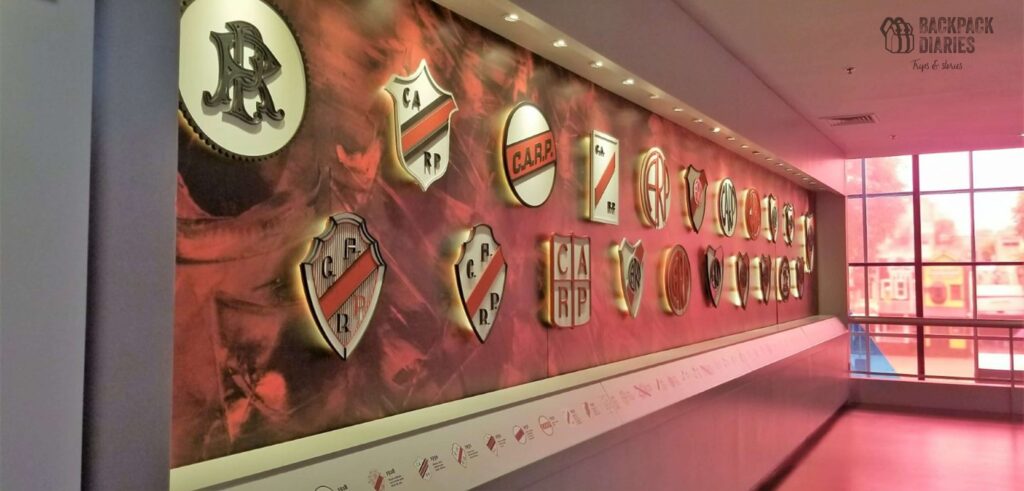
In its early years, the River Plate was known as “The Millionaires,” which is still a nickname for the team.
Further on, there is an eye-catching scale model of the monument.
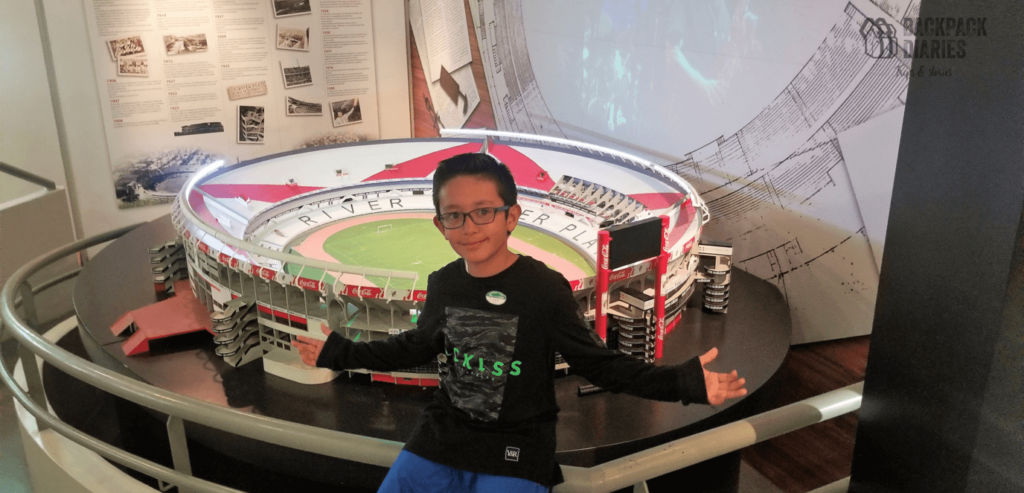
A River Plate fan, boxer “Maravilla Martinez” autographed uniform.

“The greatest” was River Plate’s motto at the time of my visit, but I just learned last year that the club changed it to “Live and play with greatness,” which has created a bit of discontent among the fans.
Statue of Labruna
Although I am not a River Plate fan, I would assume River Plate’s greatest idol is Di Stéfano; however, the giant statue at the museum entrance has the answer: Angel Labruna, a player of the 40s and 50s and the top scorer in the super derby.

Some last comments
Although not very common, players like Batistuta and Caniggia have played for both clubs in different seasons.
I am sure the 2022 World Cup in Qatar will show the world modern and impressive constructions. Still, for me, it was exciting to visit the stadium that hosted the first World Cup final I once watched on TV.
I welcome your feedback, comments, likes and or share.
If you found this post interesting, please consider sharing it with others, or you can follow my FB page or instagram.
I invite you to read my previous post about a site in Alberta, Canada: “Frank Slide, the 90 seconds that buried a town”.
Thank you and have a good day!
EO
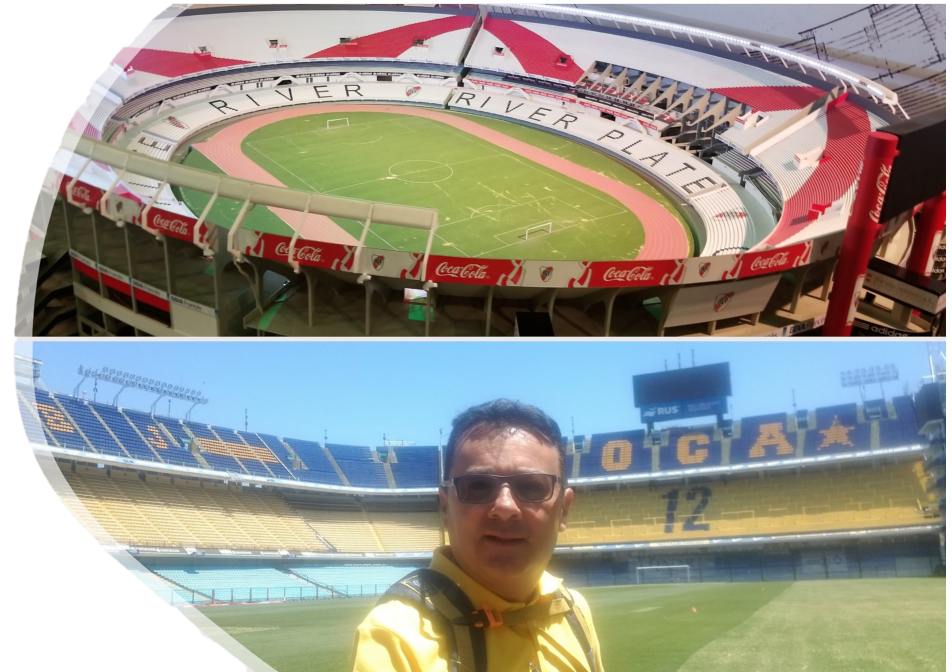





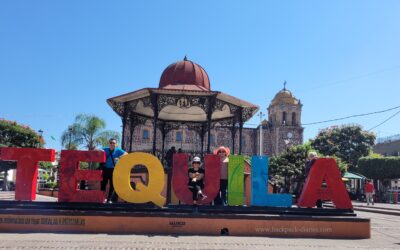
0 Comments